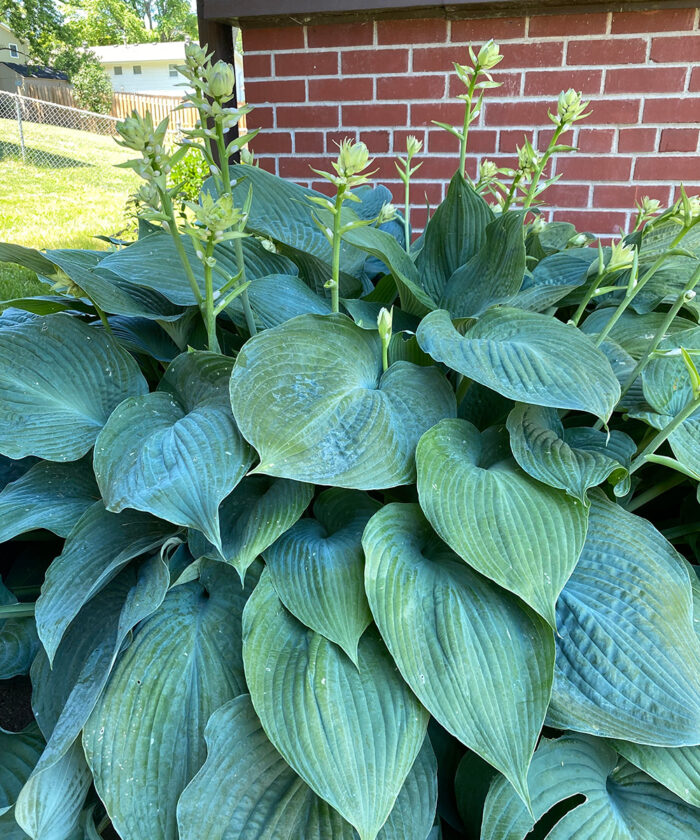
No matter the size or location of your garden, you are likely to be planting in more than one type of environment. Under the canopy of trees, along foundations, under eaves, in the narrow side yards between buildings, and other tricky areas can have dry shade conditions. I have more than a few of those spots in my yard and have found the following plants to perform quite well there.
Bugleweed is a spreader beloved for its colorful foliage and wandlike flowers
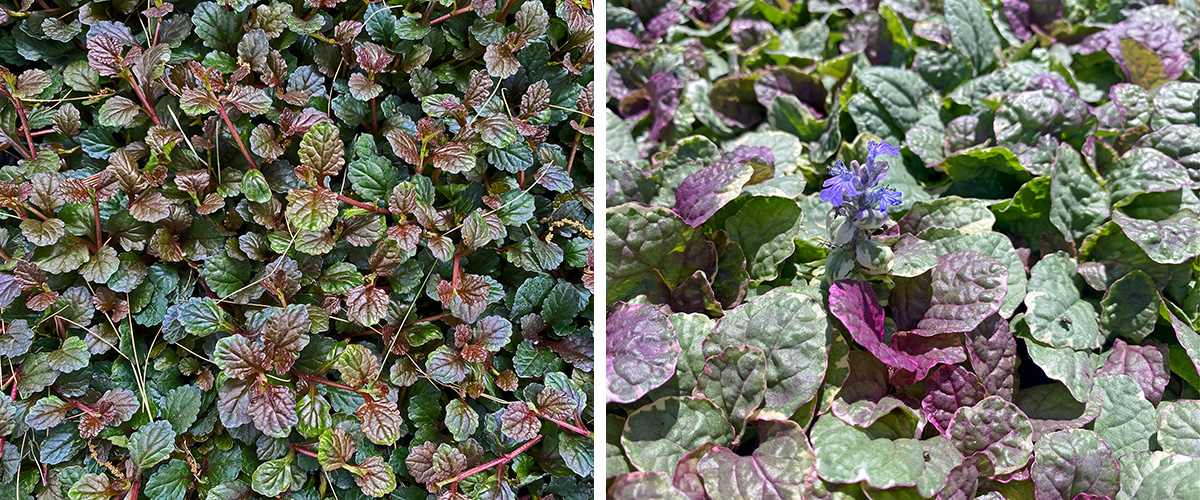
‘Bronze Beauty’ bugleweed (Ajuga reptans ‘Bronze Beauty’, Zones 4–9) and ‘Burgundy Glow’ bugleweed (Ajuga reptans ‘Burgundy Glow’, Zones 4–9)
A favorite ground cover of mine is bugleweed. It’s a superb spreader with profuse deep blue flowers in late spring. The variety I rely on most is ‘Bronze Beauty’. This vigorous plant with purplish-brownish-green leaves has lived in my garden for over 20 years. Divided and transplanted multiple times from an original shovel-size clump, it now carpets at least 50 square feet of what would otherwise be bare ground. I have found that some cultivars of bugleweed can be susceptible to winter damage, but ‘Bronze Beauty’ seems quite resistant. For those who prefer something with lighter foliage, try ‘Burgundy Glow’ bugleweed, with its colorful pale-green-and-white foliage accented with a burgundy tinge.
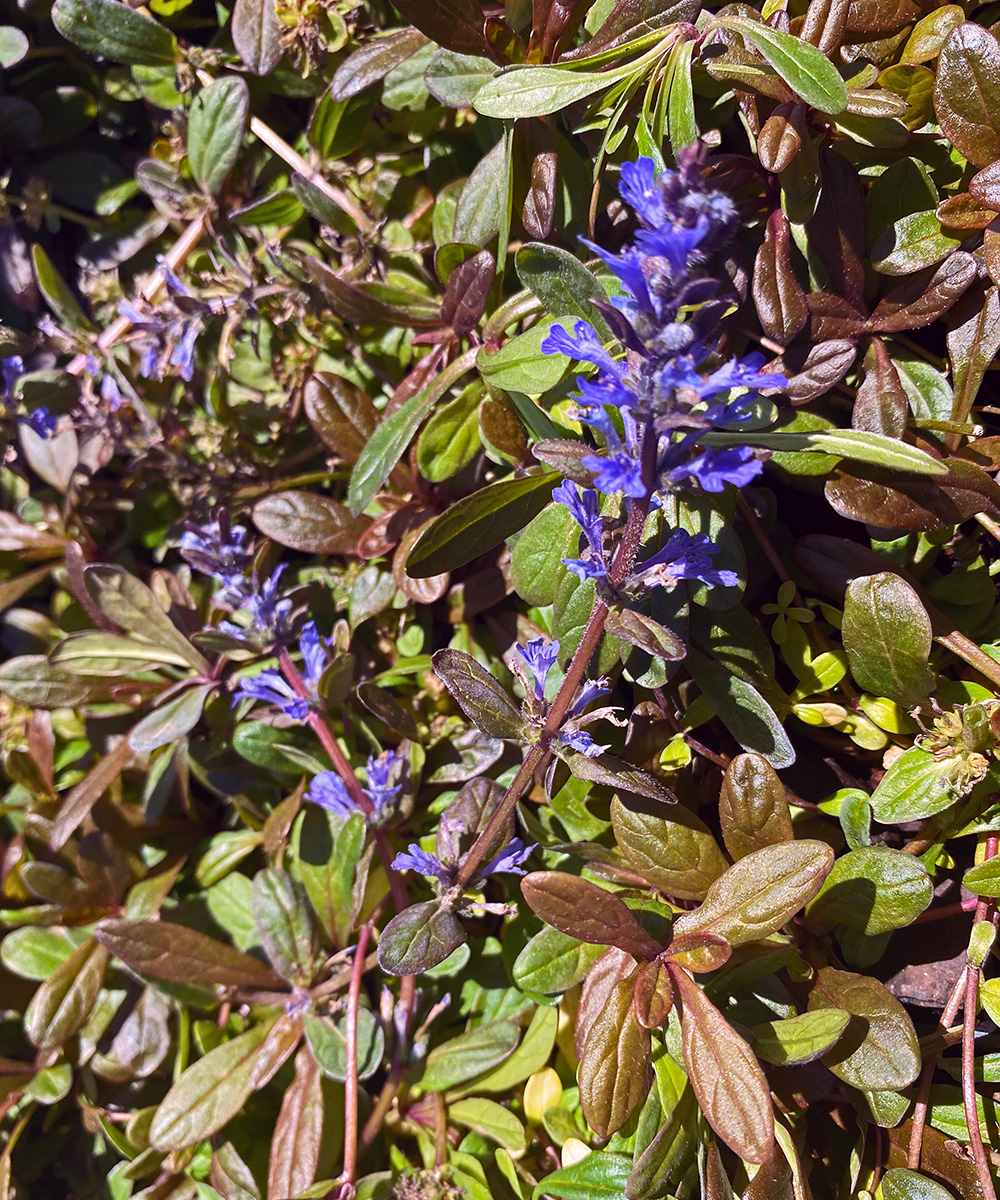
‘Chocolate Chip’ bugleweed (Ajuga reptans ‘Chocolate Chip’ syn. ‘Valfredda’, Zones 4–9)
For a really fine texture, ‘Chocolate Chip’ bugleweed (syn. ‘Valfredda’) is a great choice. It has smaller foliage than ‘Bronze Beauty’ but a similar color. Keep bugleweed moist until established, at which time it can become self-sufficient with little attention. While bugleweed is known for being aggressive in other parts of the country, it’s relatively well-behaved in the Northern Plains. I have seen it spread into my lawn in the past, but only in a very minor way.
‘Gro-Low’ sumac can tolerate harsh pruning and a variety of conditions
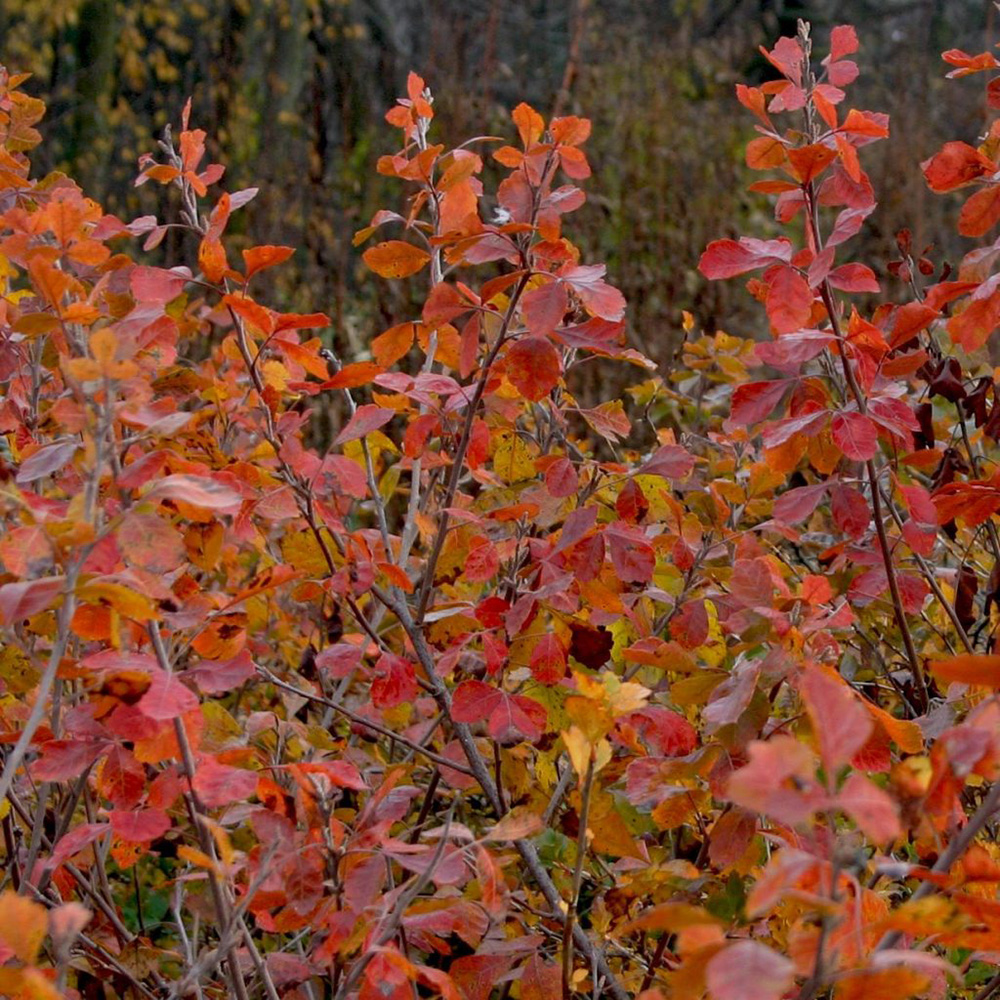
‘Gro-Low’ sumac (Rhus aromatica ‘Gro-Low’, Zones 4–9)
‘Gro-Low’ sumac is a versatile workhorse of a shrub, growing equally well in full sun or full shade. All parts of the plant are fragrant with a spicy, aromatic scent reminiscent of camphor. Possibly hardy to Zone 3, it will reach 3 to 4 feet tall and 6 to 8 feet wide if left untouched, but it is quite easy to manage the size of this plant by cutting it back to stubs before it leaves out in the spring. One does not have to be gentle in this process, as ‘Gro-Low’ is quite forgiving, quickly pushing out new growth and hiding all evidence of your work. Water well and fertilize until established; after that, only occasional watering is needed. ‘Gro-Low’ is known for its stunning fall color; when planted in shade, its colors will be less vibrant.
Hostas, the queens of the shade, perform in dry shade well after establishment
It is the opinion of this designer that a shade garden is not complete unless it has at least one variety of hosta. With all of the leaf shapes, sizes, colors, and textures available, there is no end to the possibilities where hostas are concerned. Lovely in masses or as single specimens, they are easy to grow, transplant, divide, and share, making them beloved among many gardeners. Once established, hostas are rather drought tolerant. They even grow well at the base of large trees, where they have to compete for water and nutrients. Here are a few of my all-time favorite hostas.
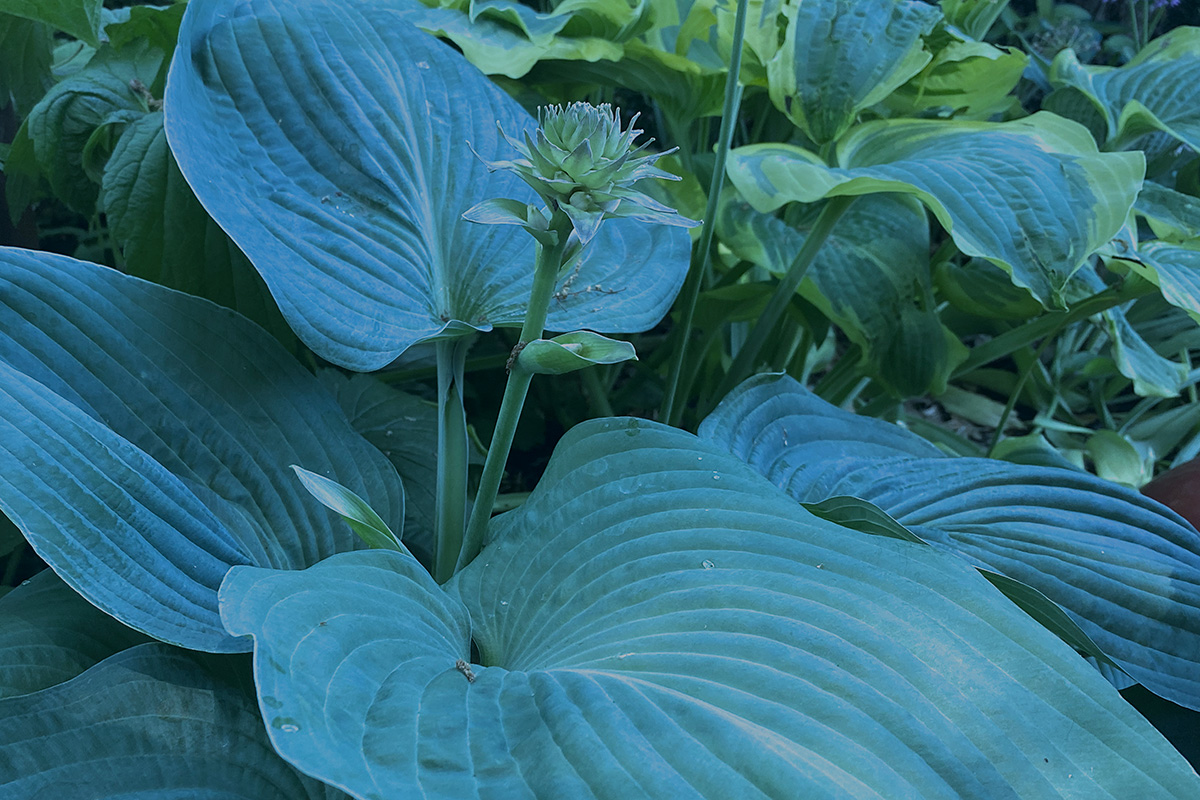
‘Elegans’ hosta (Hosta sieboldiana ‘Elegans’, Zones 3–8)
‘Elegans’ hosta grows up to 3 feet tall and 5 feet wide at maturity, having dinner plate-size blue-green leaves with a corrugated texture. When blooming in June and July, its 1-inch-wide white flowers attract a variety of pollinators. The thicker texture of the leaves makes this variety less palatable to the rabbits in my garden.
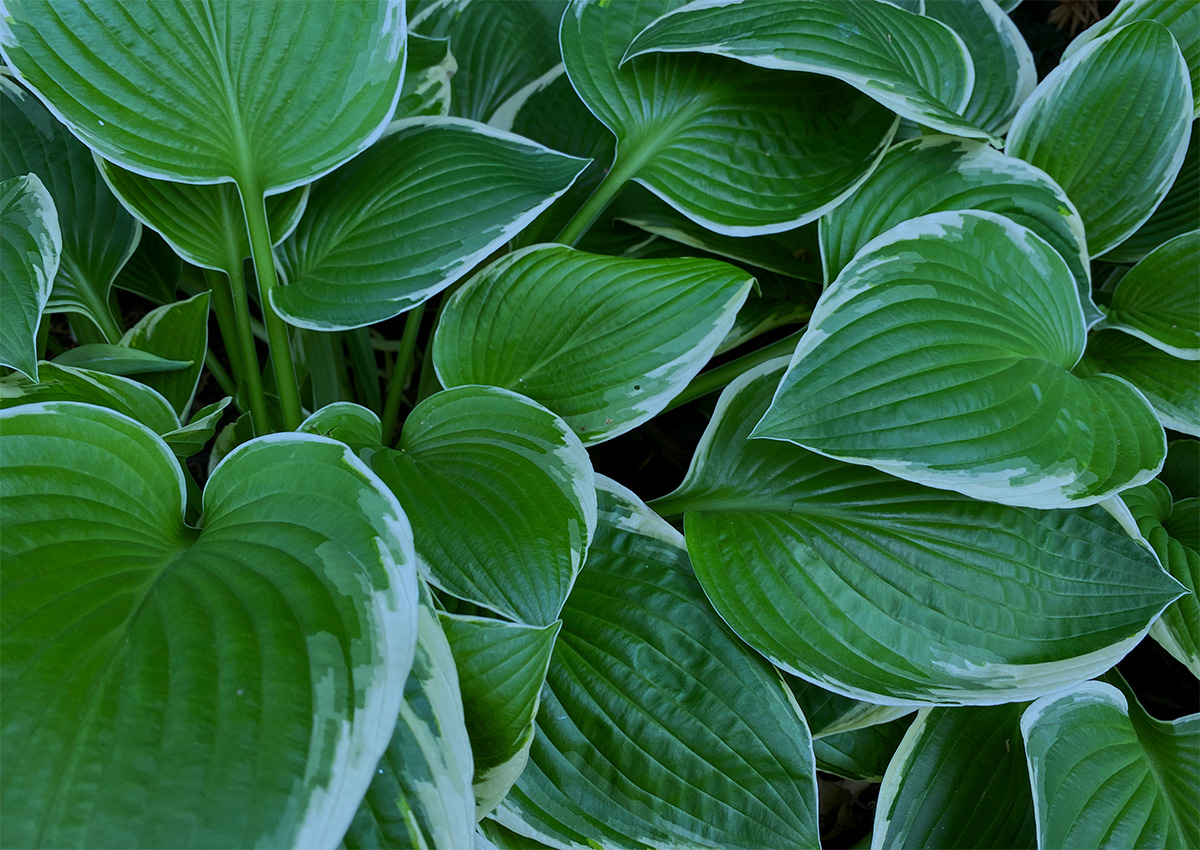
‘Francee’ hosta (Hosta ‘Francee’, Zones 3–8)
If a little sparkle is needed in the shade, consider ‘Francee’ hosta. Reaching up to 2 feet tall and 4 feet wide at maturity, this variegated beauty has large, heart-shaped green leaves with white margins. Useful in containers as well as the landscape, it contrasts nicely with the foliage of ferns or as an underplanting below shrubs.
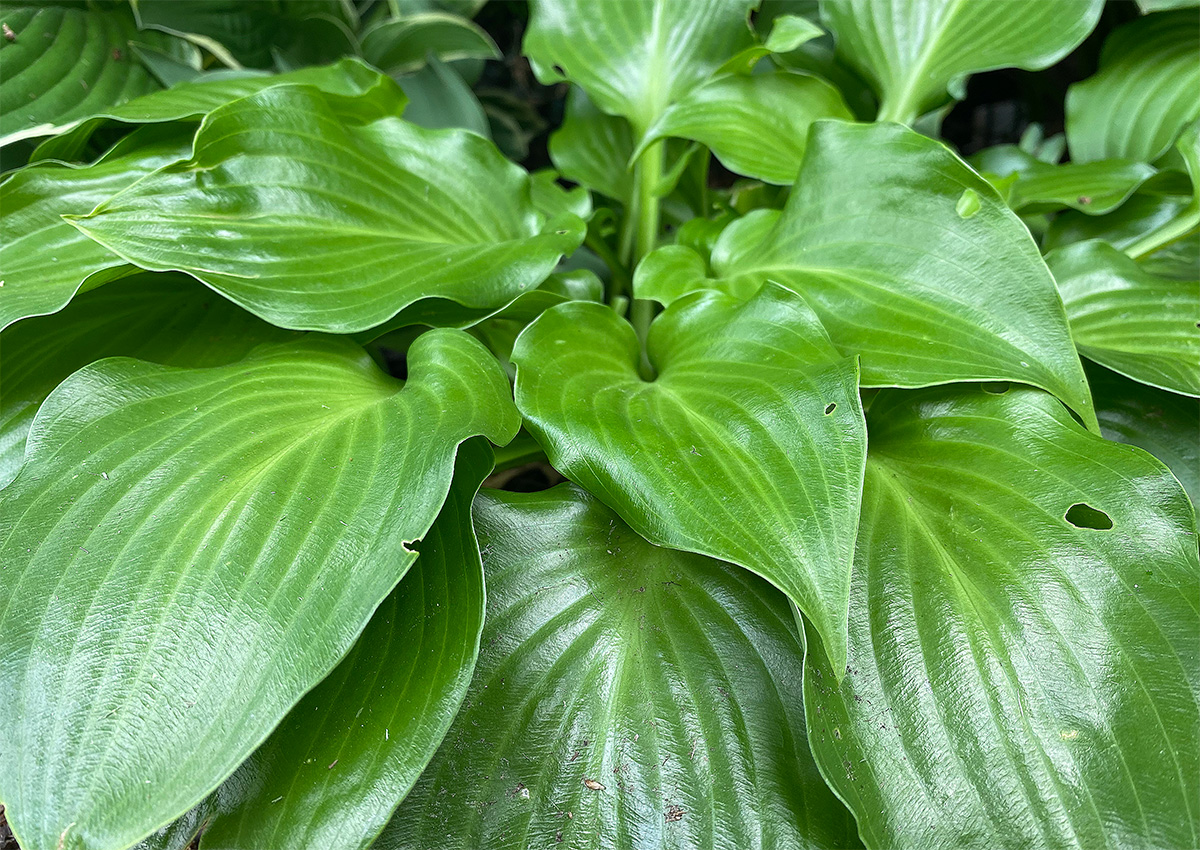
‘Invincible’ hosta (Hosta ‘Invincible’, Zones 3–8)
Shiny foliage is hard to come by, which is why I could not resist ‘Invincible’ hosta when I first spotted it in a small garden center in Minnesota over 20 years ago. Moved and shared multiple times, this medium-size dark green beauty continues to thrive and shine on in my garden. It is listed as deer and rabbit resistant, and I can say that the rabbits have left it alone in my yard. It grows only 18 inches tall and 3 feet wide with fragrant lilac flowers that bloom in late summer.

‘Paradigm’ hosta (Hosta ‘Paradigm’, Zones 3–8)
The American Hosta Growers Association dubbed ‘Paradigm’ hosta the 2007 Hosta of the Year. It has dramatic bright gold leaves sporting irregular blue-green margins. The heavily textured foliage is resistant to slugs, allowing it to keep a clean appearance throughout the growing season. Reaching up to 2 feet tall and 3 to 4 feet wide at maturity, it has purple blooms that rise on stems up to 36 inches high.
Bugleweed, ‘Gro-Low’ sumac, and hostas not only work well for dry shade, but they would look good planted together too. These plants require little extra work; just be sure to keep them moist until established and to fertilize each spring. Water on occasion as weather dictates. After that, let these plants manage themselves.
For more recommendations of plants for dry shade, check out:
—Marti Neely, FAPLD, owns and operates Marti Neely Design and Associates in Omaha, Nebraska.
Fine Gardening Recommended Products

ARS Telescoping Long Reach Pruner
Fine Gardening receives a commission for items purchased through links on this site, including Amazon Associates and other affiliate advertising programs.

isYoung Birdlook® Smart Bird Feeder with Camera
Fine Gardening receives a commission for items purchased through links on this site, including Amazon Associates and other affiliate advertising programs.

The Crevice Garden: How to make the perfect home for plants from rocky places
Fine Gardening receives a commission for items purchased through links on this site, including Amazon Associates and other affiliate advertising programs.



















Comments
Log in or create an account to post a comment.
Sign up Log in